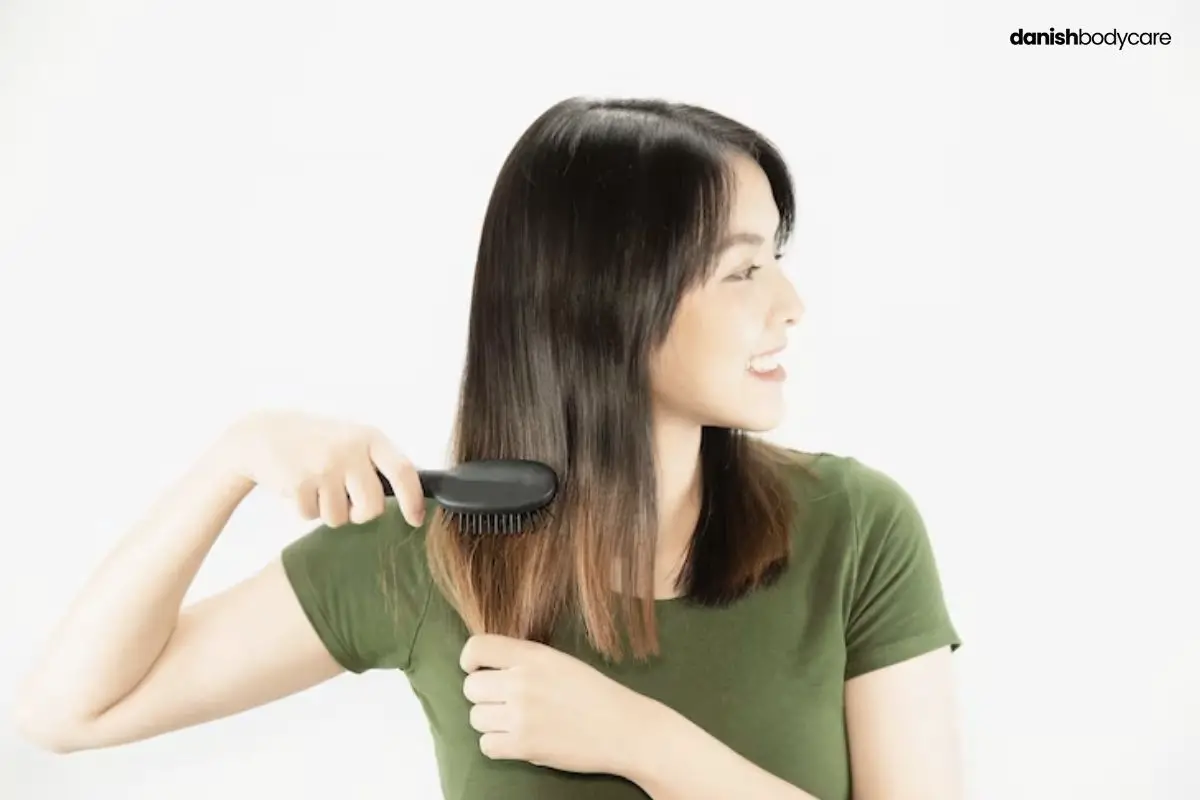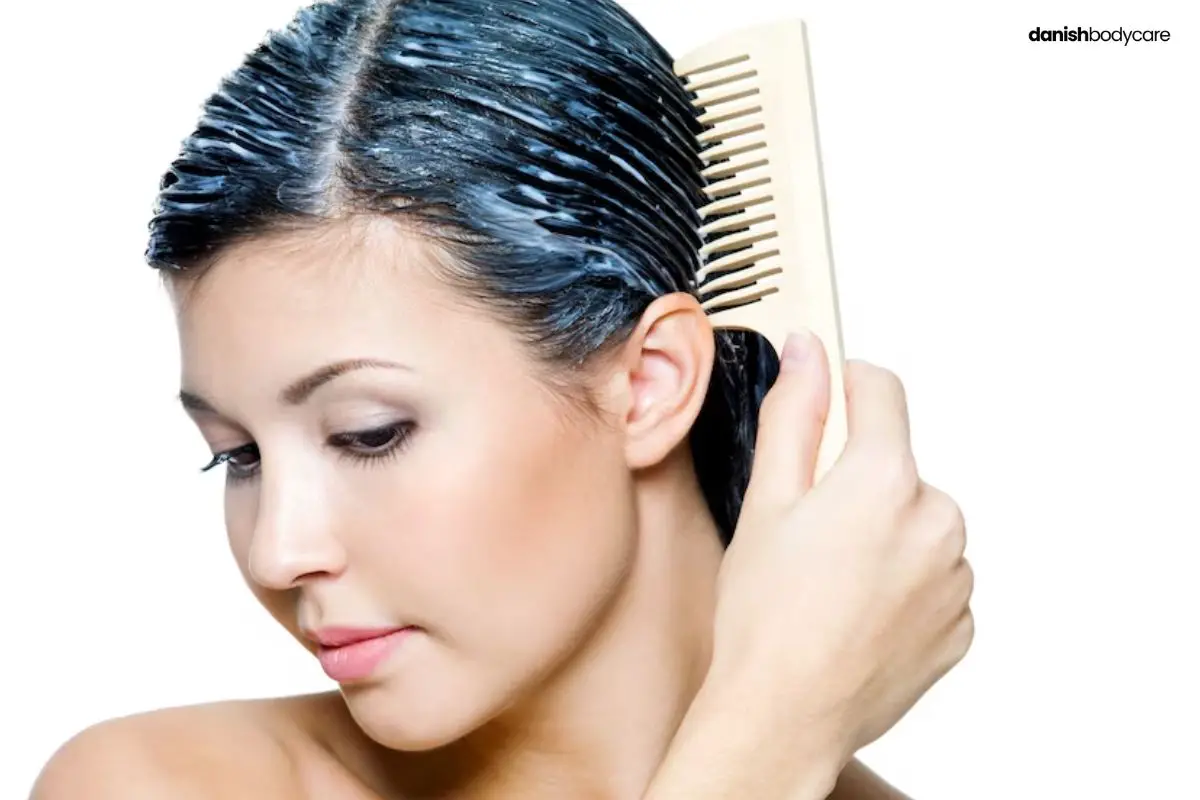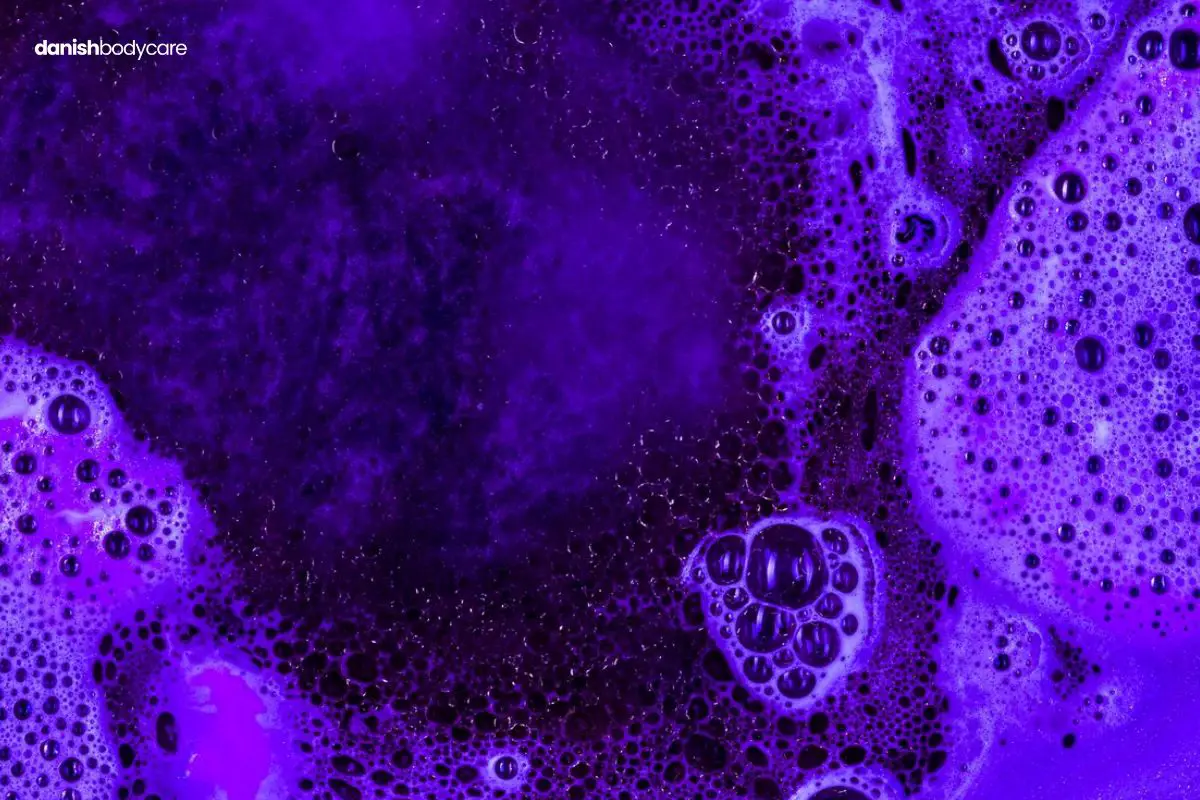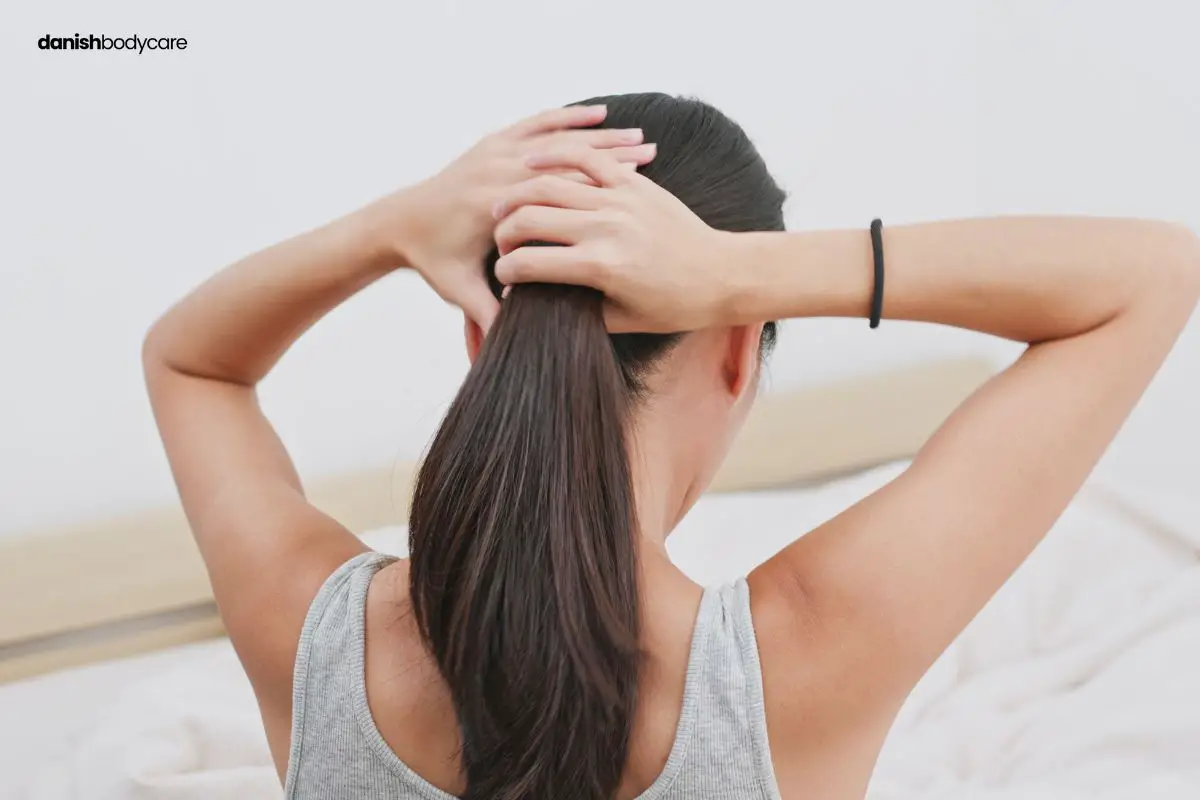Learning how to grow low-porosity hair can be a transformative journey. This hair type has a bound cuticle layer, allowing less moisture and nutrients to penetrate.
“Managing low porosity hair is all about understanding its unique needs,” says Trisha Thomas, haircare expert.
In this article, we’ll provide expert tips on promoting growth and maintaining a healthy, vibrant mane.
Ready to transform your hair care routine? Dive in.
What Is Low Porosity Hair?
Low-porosity hair has cuticles that lay flat and tight against each other. This makes it difficult for moisture and nutrients to penetrate.
Your hair is less absorbent and can experience product buildup. Understanding hair porosity is important for keeping your hair healthy and growing.
With low-porosity hair, you must find the right techniques and products to ensure proper hydration.
What Causes Low Porosity Hair?
If you have low-porosity hair, here is what causes it:
- Lack of damage
- Genetics
- Environmental factors
- Protein overload
- Age
- Hormones
Lack of Damage
You might think that hair damage would lead to low porosity, but that’s not usually the case. Your hair’s lack of damage can contribute to low porosity.
Healthier hair cuticles are less likely to be porous.
Genetics
Genetics plays an important role in low porosity hair. Your genes can determine the structure of your hair cuticles. This affects how moisture can penetrate your strands.
Environmental Factors
Things like humidity and exposure to sunlight can impact your hair’s porosity.
If you live in a dry, low-humidity environment, your hair might have trouble retaining moisture. This causes low porosity.
Protein Overload
Too much protein can stiffen your hair strands, leading to low porosity.
Be mindful of the protein content in your hair products. Don’t overdo it with protein treatments.
Age
As you age, your hair tends to change – sometimes resulting in low porosity. Aging hair can become more resistant to moisture absorption.
Hormones
Hormonal imbalances can affect many aspects of your body, including your hair. Changes in hormone levels may lead to changes in hair porosity. This includes low porosity.
What Are the Signs of Low Porosity Hair?
To make sure you have low-porosity hair, check the main low-porosity hair characteristics:
- Scalp product buildup
- Moisture resistance
- Difficulty absorbing oils
- Long drying time
- Product buildup
- Shiny but often dull and frizzy
- Protein sensitivity
- Smooth but rough and dry
- Resistance to chemical treatments
- Prone to tangles and matting
- Lacks elasticity
- Frequent split ends
- Floats in water
Scalp Product Buildup
You might notice product buildup on your scalp due to low porosity hair’s resistance to absorbing moisture.
Moisture Resistance
Low porosity hair struggles with taking in water and products because its cuticle layer is tightly closed.
Difficulty Absorbing Oils
Oils may not be absorbed easily, leading to a greasy feel and appearance.
Long Drying Time
Washing and drying low-porosity hair takes longer than usual since it doesn’t absorb water easily.
Product Buildup
Products may accumulate on the surface of your hair, giving a dull and weighed-down look.
Shiny But Often Dull and Frizzy
Low porosity hair may appear shiny, but it’s prone to dullness and frizz due to dryness and difficulty retaining moisture.
Protein Sensitivity
Low-porosity hair can be sensitive to protein, which may cause breakage and dryness.
Smooth But Rough and Dry
Despite feeling smooth, low-porosity hair can be rough and dry due to moisture resistance.
Resistant to Chemical Treatments
It’s challenging to process low-porosity hair with dyes and perms as it resists chemicals.
Prone to Tangles and Matting
This hair type is more likely to tangle or mat, causing breakage.
Lacks Elasticity
Low-porosity hair often has limited elasticity, making it prone to breakage.
Frequent Split Ends
You may experience frequent split ends with low porosity hair, requiring regular trims.
Floats in Water
An indicator of low porosity hair is its ability to float in water, as it doesn’t absorb moisture with ease.
Is Low Porosity Hair Hard To Grow?
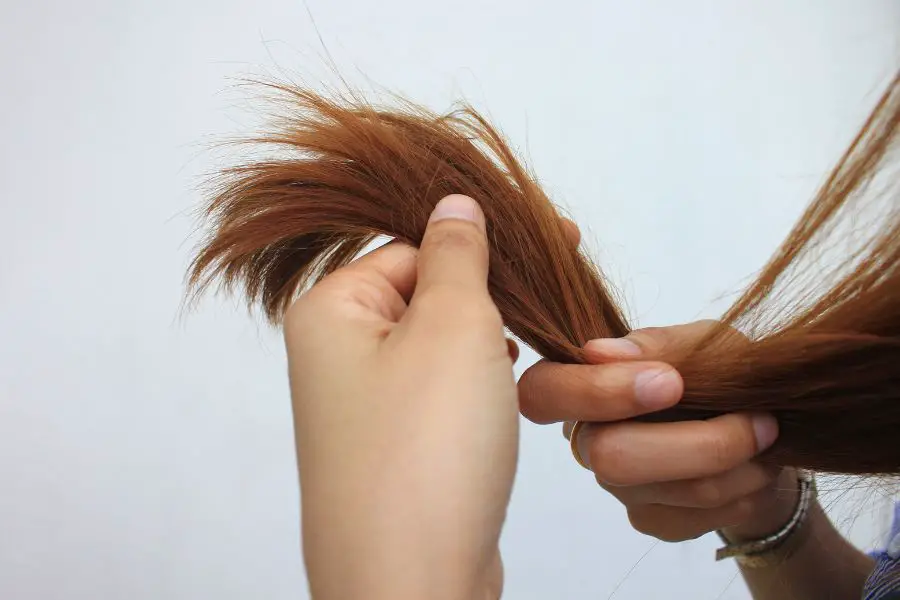
Low-porosity hair is not inherently harder to grow than other hair types. It can present unique challenges due to its structure.
The ability to absorb and keep moisture and nutrients is essential for hair growth and health. As low porosity struggles with this, your hair might grow slower.
The limited ability to absorb and keep moisture in can lead to
- Dryness
- Breakage
- Lack of elasticity
This happens if you don’t manage your hair correctly.
With a proper understanding of its unique needs and the right hair care practices, you can grow low-porosity hair faster.
Remember, everyone’s hair growth rate and potential are also influenced by other factors:
While the porosity of your hair is an important aspect of hair care, it’s just one part of a larger picture.
Here is how the low-porosity hair growth compares to other types of hair porosity:
| Porosity type | Characteristics | Care needed | Growth speed |
|---|---|---|---|
| Low porosity hair | Tight cuticles; moisture absorption is hard. | Deep conditioning, lightweight products, gentle heat. | Normal, if properly cared for. Challenges due to potential dryness and breakage. |
| Medium porosity hair | Balanced moisture absorption and retention. | Regular balanced hair care routine. | Normal, as it’s least likely to face moisture-related issues. |
| High porosity hair | Raised/damaged cuticles; quick moisture loss. | Deep conditioning, heavy oils, avoid heat/harsh treatments. | Normal, if properly cared for. Challenges due to potential dryness and breakage. |
9 Tips on How To Grow Low Porosity Hair
Here are nine easy tips to take care of your low porosity hair, which promote hair growth:
- Use the right products
- Use clarifying shampoos
- Ensure dump hair when applying products
- Use steam or heat
- Moisturize the right way
- Use products with humectants
- Balance your pH
- Apply products in sections
- Trim your hair
1. Use the Right Products
To grow low-porosity hair, it’s essential to use products that cater to its needs.
Look for lightweight oils and moisturizers, such as:
- Aloe vera
- Tea tree oil
- Rosemary oil
Be cautious of heavy oils like coconut oil and castor oil, as they can cause product buildup.
2. Use Clarifying Shampoos
The use of a clarifying shampoo for low-porosity hair helps remove product buildup. These shampoos cleanse your hair without stripping it of its natural oils.
This is important for low-porosity hair, as it can struggle to absorb moisture when weighed down by excess products.
3. Ensure Dump Hair When Applying Products
Ensure your hair is damp when applying products. This helps to open up the hair cuticles.
Opening up the cuticles makes it easier for low-porosity hair to absorb the necessary moisture and nutrients.
4. Use Steam or Heat
Steam or heat treatments open up the hair cuticles and allow moisture to penetrate the hair shaft better.
Use a steamer or a warm towel to help your hair absorb the ingredients in your conditioner and other moisturizing treatments.
5. Moisturize the Right Way
For low-porosity hair, frequent, light moisturizing is better than heavy, infrequent applications.
Use water-based leave-in conditioners and lighter oils. They keep your hair hydrated without causing buildup.
6. Use Products with Humectants
Choose products that contain humectants like glycerin and honey.
These ingredients attract moisture from the air and help it bind to your hair. This ensures that your strands stay hydrated.
7. Balance Your pH
A balanced pH promotes healthy hair growth for low-porosity hair.
Look for products with a pH between 4 and 5.5. This range keeps your hair cuticles closed, locking in moisture and promoting growth.
8. Apply Products in Sections
To ensure that all your hair gets the necessary moisture and nourishment, apply products in sections.
This is important for low-porosity hair. It can be difficult for products to penetrate the hair shaft evenly.
9. Trim Your Hair
Regular trims can help low-porosity hair grow. They prevent and remove split ends and breakage.
This keeps your hair healthy and helps maintain its growth potential.
What to Avoid If You Have Low Porosity Hair
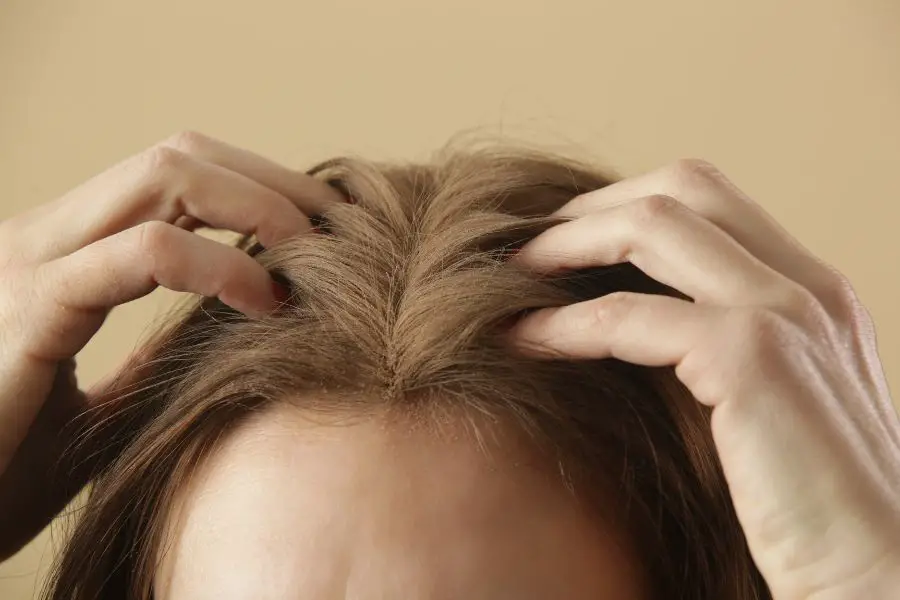
If you have low-porosity hair, avoid this to promote growth:
- Heavy oils and butters
- Protein overload
- heat styling
- Silicones
- Low-quality shampoos
- Specific ingredients
Heavy Oils and Butters
Your low-porosity hair needs lightweight oils and moisturizers. Heavy oils and butters can weigh down your strands and cause product buildup.
Instead of using heavy ingredients like shea butter, coconut oil, or castor oil, try lighter options like grapeseed oil or argan oil.
These are easier for your low-porosity hair to absorb and stay moisturized.
Protein Overload
Low-porosity hair is prone to protein sensitivity. Excess protein can lead to stiff, brittle hair.
Focus on maintaining a proper balance of protein and moisture. Opt for protein-free or low-protein products, and don’t use protein treatments often.
Heat Styling
Although heat can help open up the hair cuticles for low-porosity hair, excessive heat styling can weaken and damage your strands.
Limit the use of heat-styling tools like flat irons, curling irons, and blow dryers.
When you do use them, always apply a heat protectant to cut the damage.
Silicones
Silicones are present in hair care products to smooth and add shine. They can leave a residue on low-porosity hair, leading to product buildup.
Choose silicone-free products to avoid weighing down your hair and making it difficult to moisturize.
Low-Quality Shampoos
Low-quality shampoos can contain harsh sulfates that strip natural oils from your hair. This causes dryness and breakage.
Invest in sulfate-free or clarifying shampoos. They cleanse without damaging your low-porosity hair.
Specific Ingredients
Certain ingredients create a barrier around your low-porosity hair. They inhibit moisture absorption.
Some ingredients to avoid for low-porosity hair are:
- Alcohols
- Mineral oil
- Sulfate
Check product labels for these ingredients and avoid using products that contain them.
How to Test for Low Porosity Hair
To test your hair’s porosity, try the float test:
- Pluck a clean, dry hair strand and place it in a glass of water.
- Observe for a few minutes.
- If it floats, you have low-porosity hair.
Take our hair porosity quiz to find out more.
Frequently Asked Questions
What are the best products for low-porosity hair growth?
Look for lightweight, water-based leave-in conditioners. They can penetrate the hair cuticles with ease. Opt for hair oils like jojoba, argan, or grapeseed, which are light and will not cause build-up. For optimal growth, remember to moisturize your hair with creams and custards designed for low-porosity hair.
Which hair masks work best for low-porosity hair growth?
Deep-conditioning masks with ingredients like honey, aloe vera, and avocado are beneficial. These ingredients help hydrate, strengthen, and promote growth in low-porosity hair. When applying hair masks, use heat or steam to open the cuticles and ensure better absorption.
How can I maintain low-porosity hair with ease?
Maintaining low-porosity hair requires a few key steps to ensure proper care and growth. Use a clarifying shampoo to cleanse your hair, as product buildup can be an issue. Regular scalp massages with lightweight oils stimulate hair growth and improve circulation. Avoid using hot tools, as these can cause damage and hinder growth.

